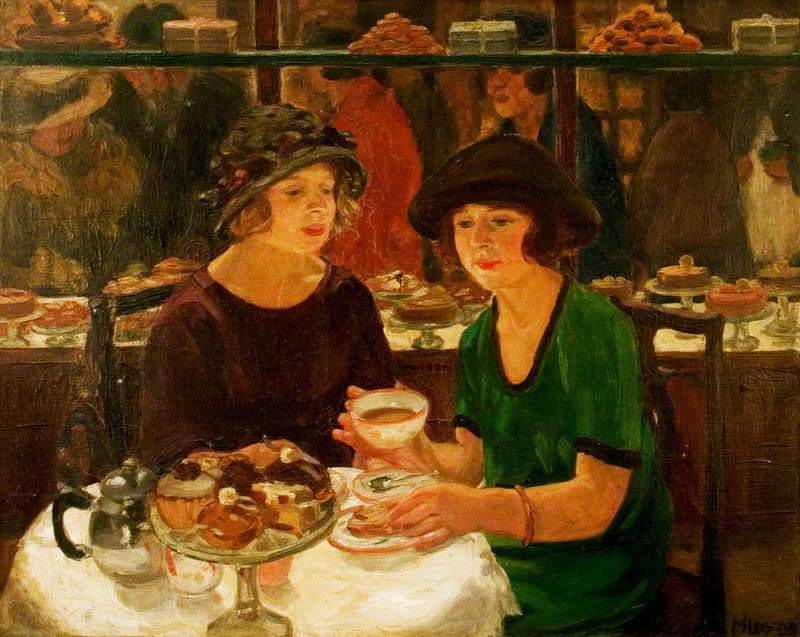
By Staff Middle Land
by Anne Wallentine
Tea at home
In England, tea began as a high-status symbol and became an endearing, popular ritual that united people even as its varied serving methods and venues codified class distinctions.
When she married Charles II in 1662, Catherine of Braganza was said to have brought a taste for tea to England, as well as the Portuguese-controlled Seven Islands of Bombay (modern Mumbai) in her dowry.
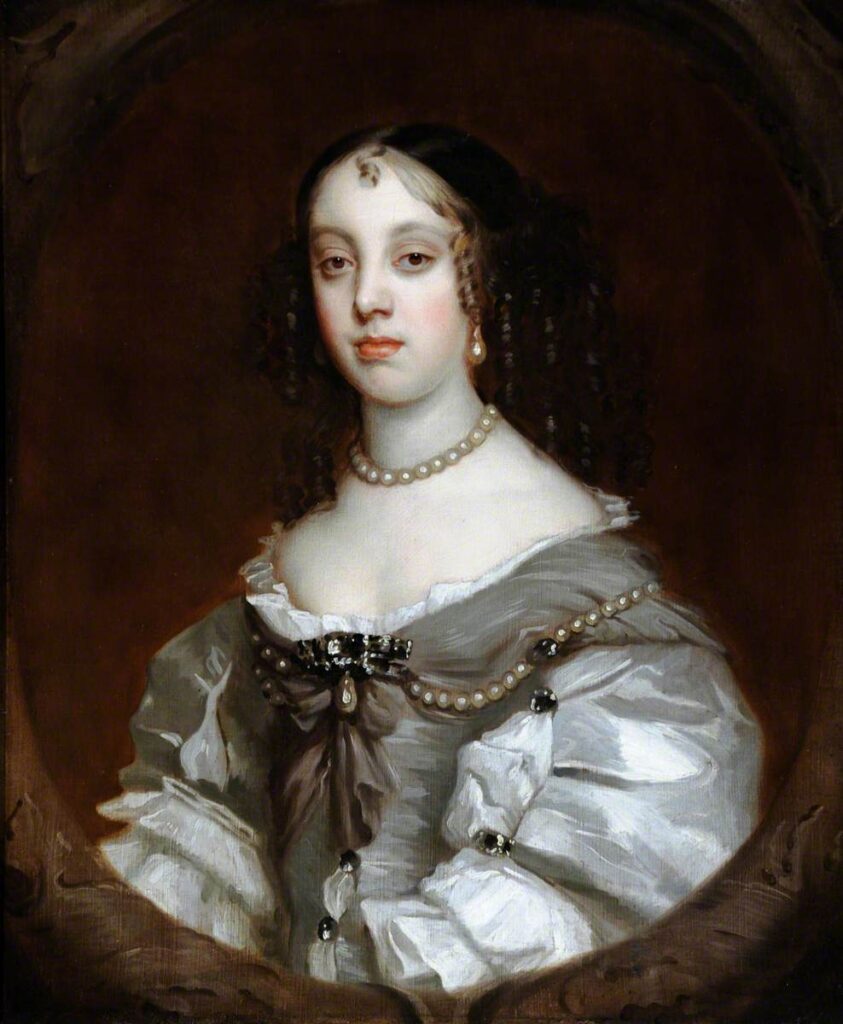
However, the East India Company had made tea available as a luxury prior to Catherine’s arrival. And while the court’s consumption contributed to the fashion, the public gradually made it the sociable custom it remains.
Initially, tea was depicted in conversation pieces to display elite status and politesse. A 1720 painting of a wealthy English family at tea includes both servants and guests, conveying the formal social hierarchies that revolved around the tea-table.
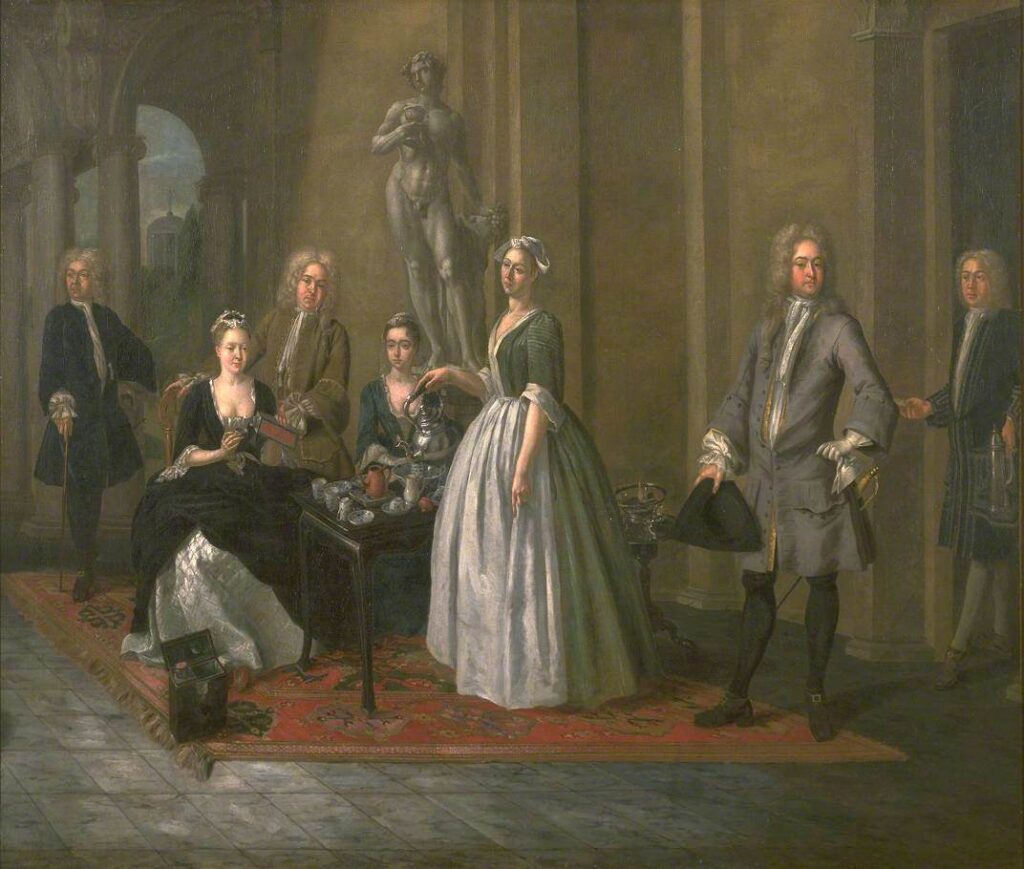
The tea service also signalled the family’s wealth and access to the benefits of imperial trade, including the ornate silver kettle, Japanese lacquerware table, Chinese blue-and-white porcelain, and Yixing stoneware teapot. As tea was so valuable, the mistress of the house locked and controlled the household tea caddy – here displayed in the foreground by her feet.
At the start of the eighteenth century, few could afford to be tea drinkers, and official imports were around six tons per year. By the end of the century, imports rose to 11,000 tons (not accounting for the substantial smuggling industry), and the price had fallen to one-twentieth of its former cost. These changes allowed tea to filter into popular consumption, moving from wealthy drawing rooms to everyday homes.
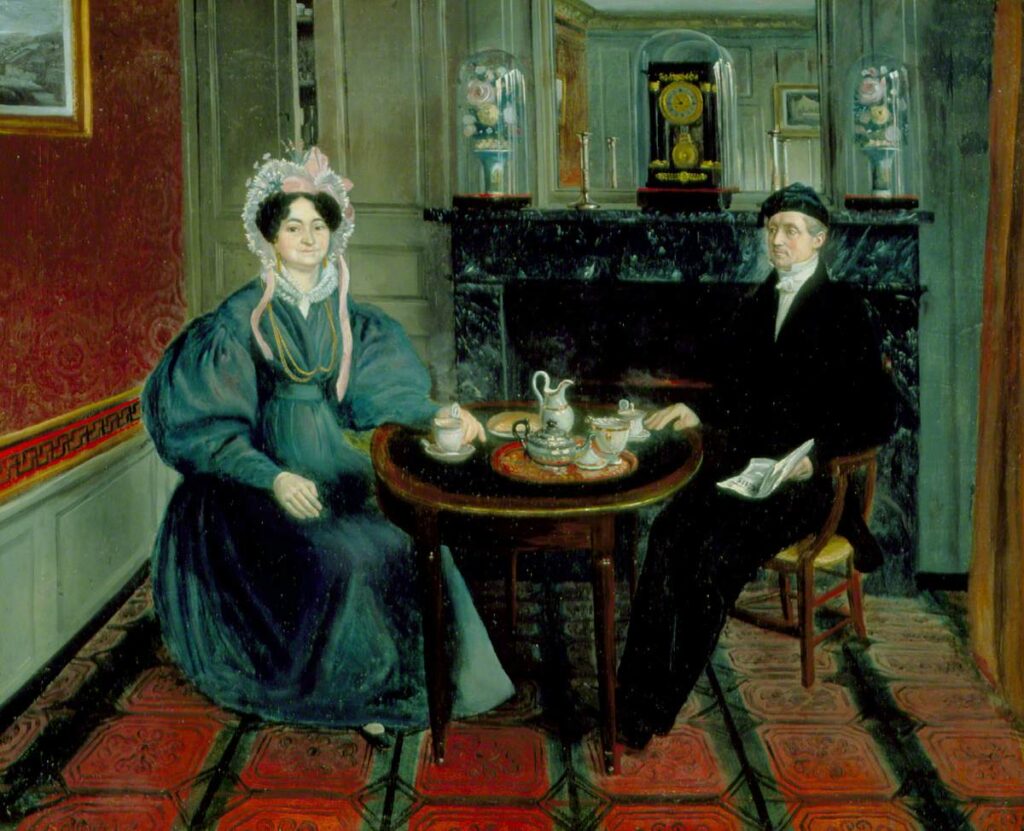
By the nineteenth century, tea had become affordable to the working class – although how it was taken, when, and in what kind of service remained distinguishing social markers.
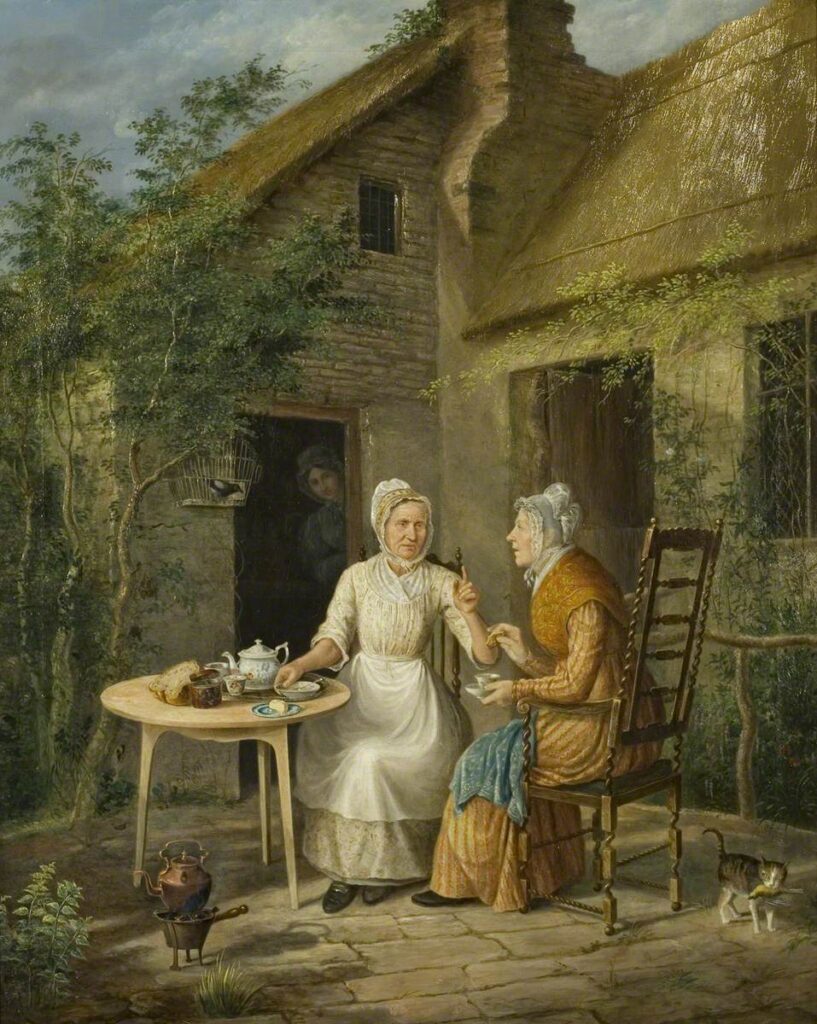
Tea served at home garnered feminine associations, as men were freer to socialise elsewhere. Satirical prints like The Tea-Table used this setting – where women held power – to condemn gossip. (The stereotype continued in later images that poked fun at village gossips exchanging scandalous titbits over tea.)
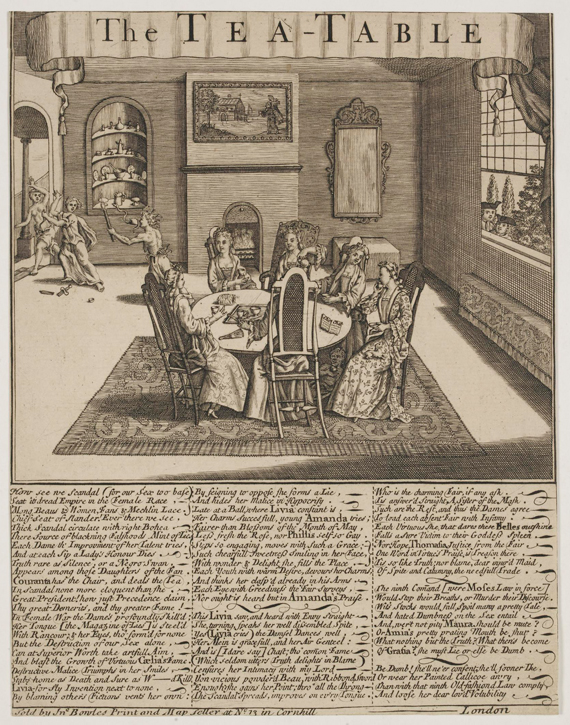
Tea became embedded in public life through tea gardens, parties, and dances. Vauxhall Gardens opened in 1732, the first of many fashionable spaces to provide refreshments and entertainment.
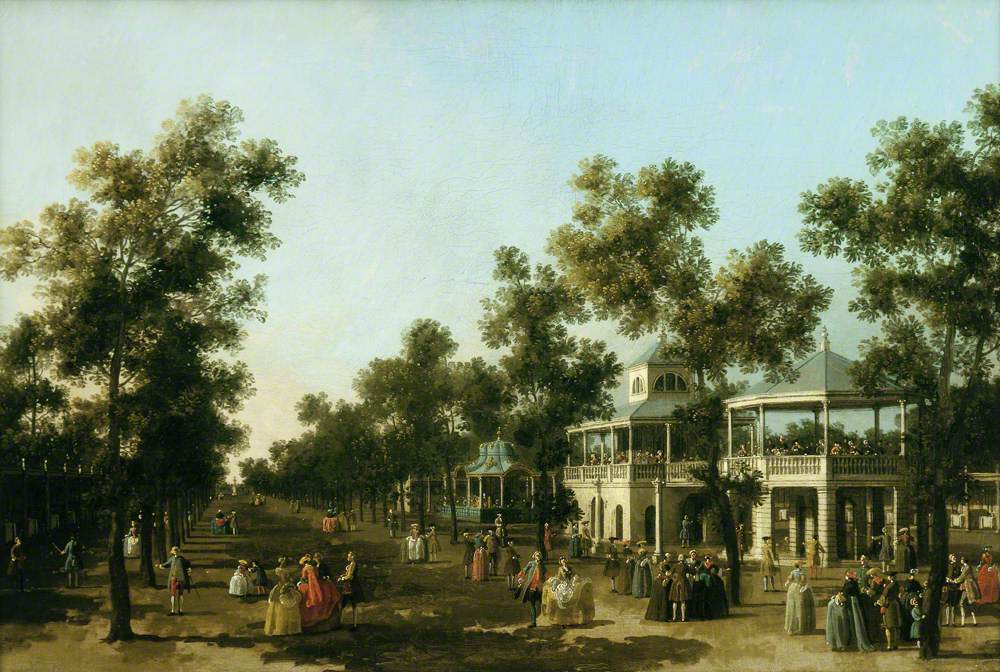
Tea rooms catered to women hemmed in by social restrictions, especially as contemporary coffee houses were often dominated by men.
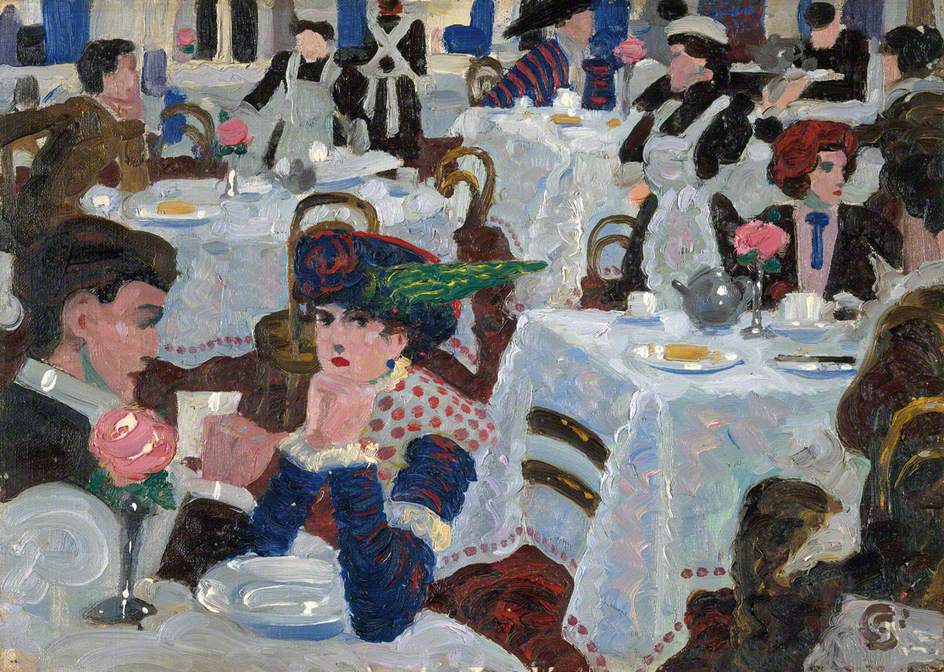
Tea rooms’ respectability also appealed to proponents of the nineteenth-century temperance movement, who promoted tea as a healthy and moral alternative to alcohol (in contrast to early pamphlets that decried tea as a detrimental drug). Opponents poked fun at the movement’s sober attitude, as in paintings like Edward Bird’s Teatotalism, which shows a plainly dressed woman blowing on her cup of tea.
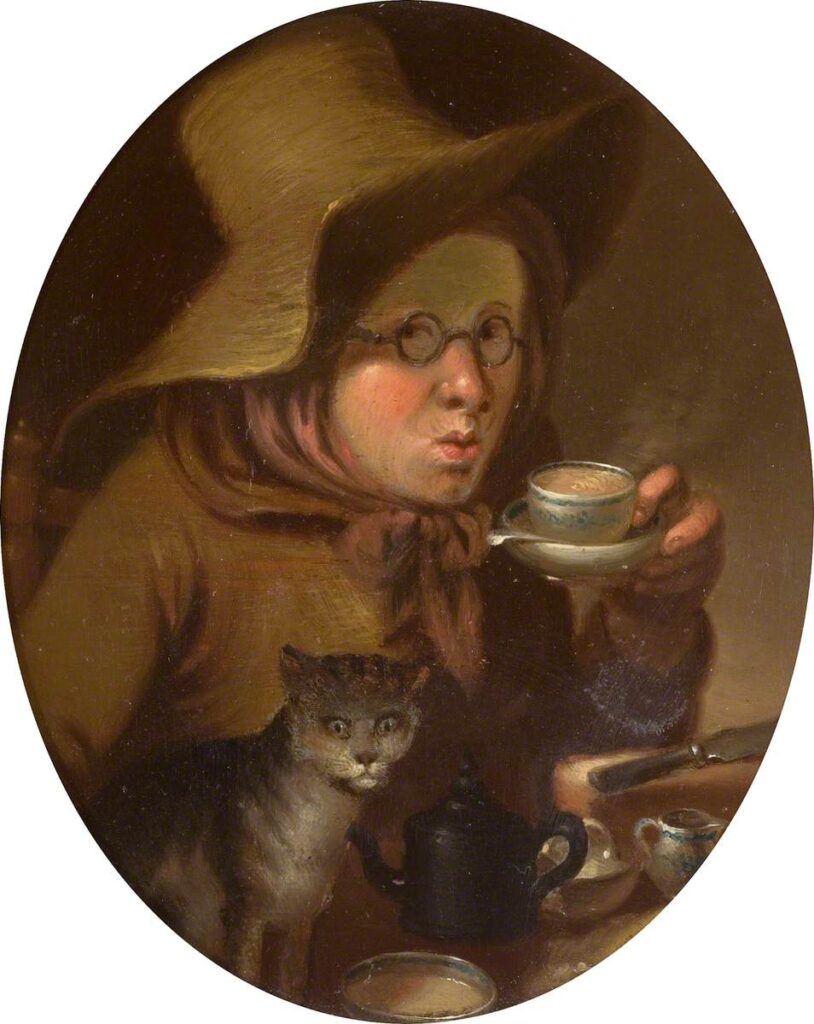
In the early nineteenth century, the Duchess of Bedford’s peckishness allegedly established the custom of afternoon tea, though the popularity of temperance tea parties may also have played a role.
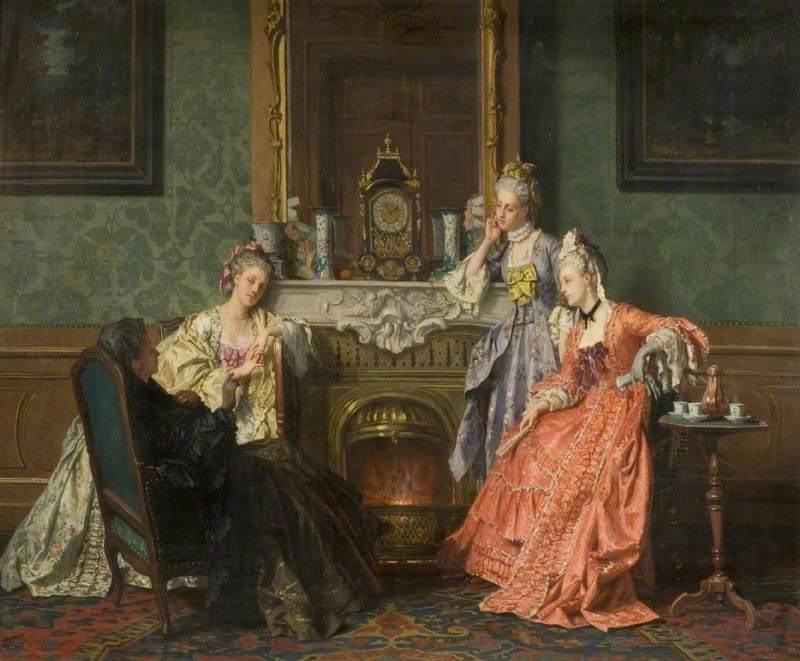
The trend soon extended to luxury hotels and department stores, which offered lavish spreads. However, most people consumed humbler versions of tea and toast.
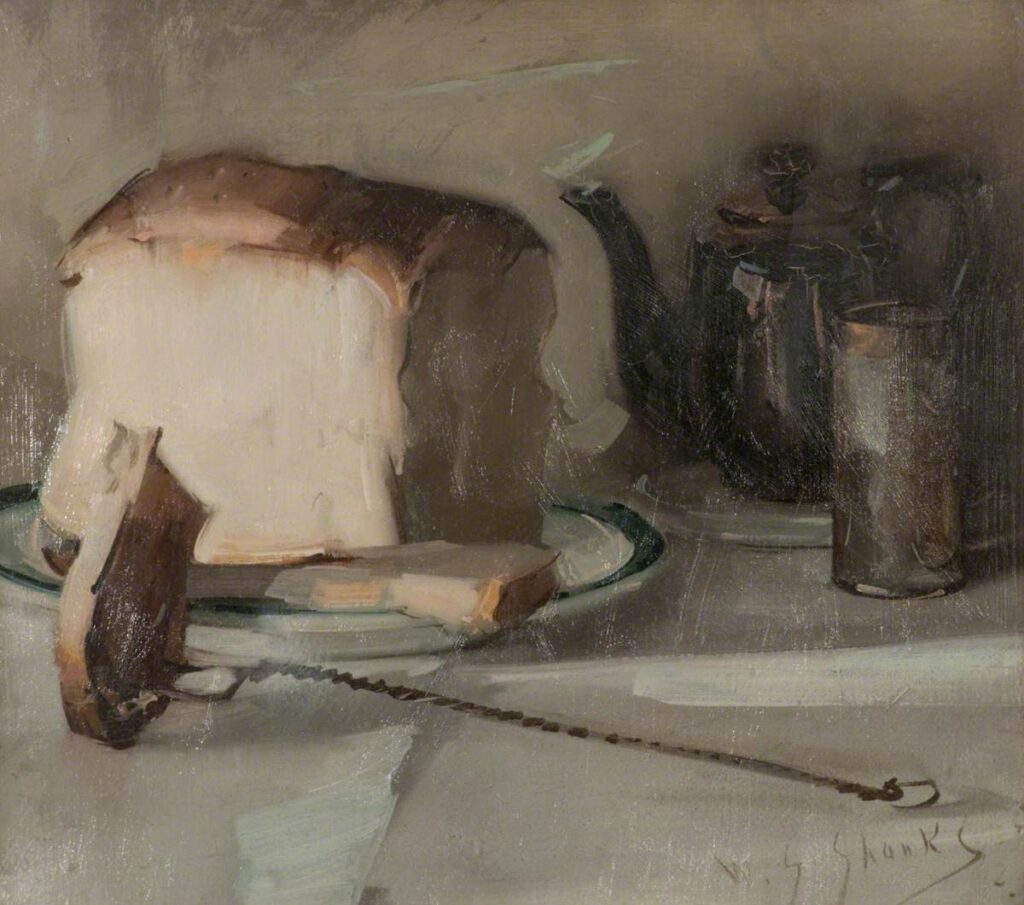
While tea continued to be rooted in domestic rituals, its casual accessibility rose in the twentieth century. Tea shops staffed by uniformed attendants served the increasingly urban workforce.
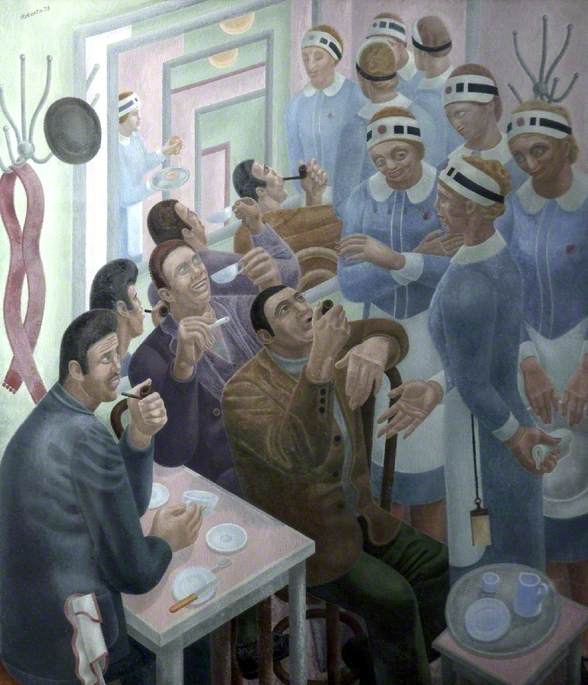
With the rise of industrialisation, tea breaks were encouraged to keep people alert instead of the beer once provided to agricultural workers.
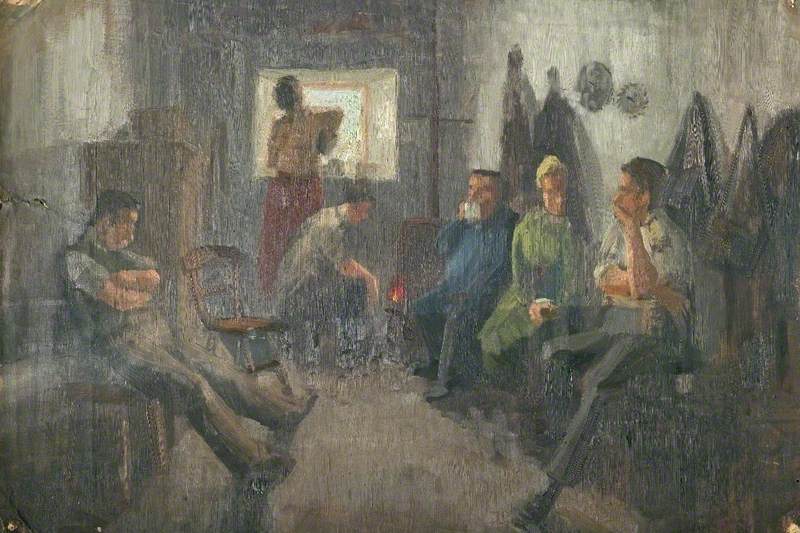
A 1956 tea break at a joinery works in Derbyshire shows workers slumped or slurping cups of builder’s. No matter the occasion, tea was there.
Tea and soft power
As tea’s production and popularity grew, it became a national drink, associated with British power and identity. The empire relied on it for revenue, and the population for social functioning. To consume tea was to be part of the British empire. Naturally, advertising stepped in to promote both.
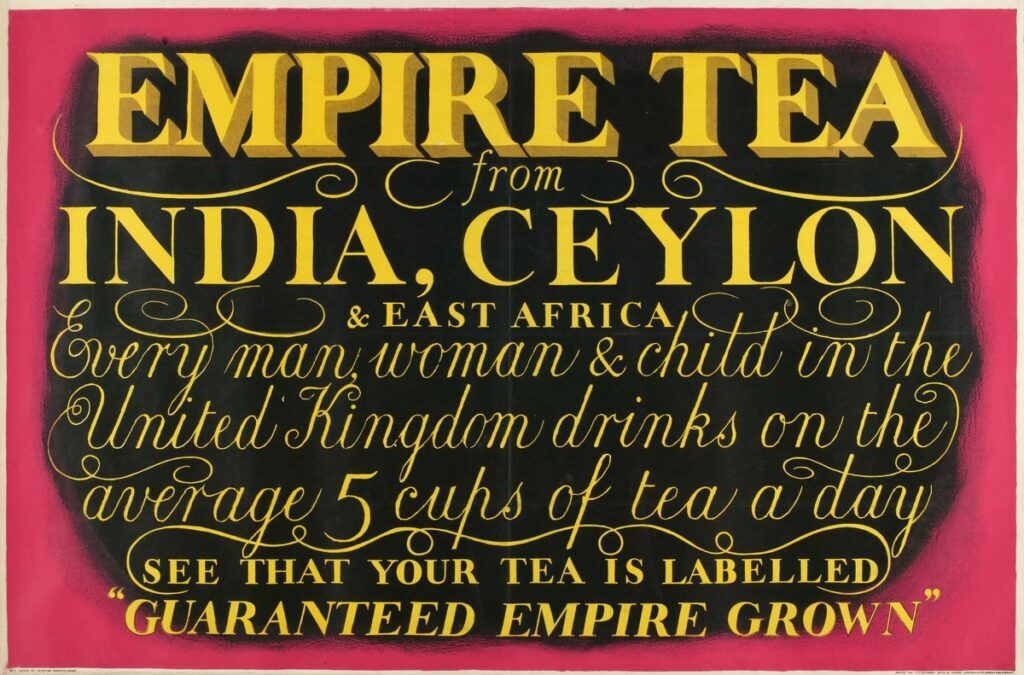
The Empire Marketing Board commissioned numerous posters,
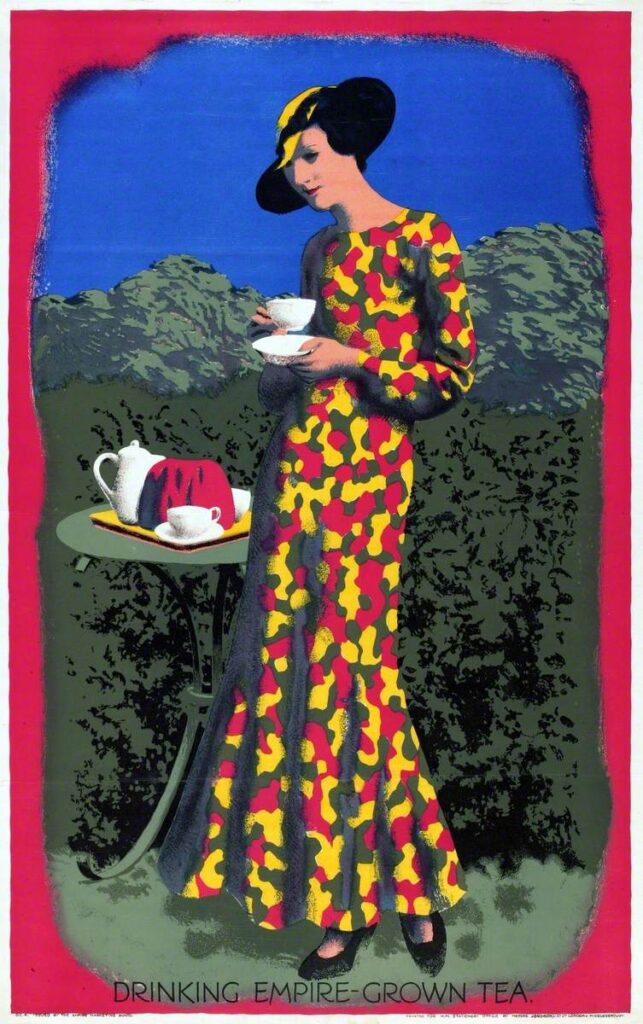
including a 1935 series exhorting consumers to ‘Drink Empire-Grown Tea’ to encourage England’s trade dominance.
The series contrasted a woman picking tea on a plantation with the leisure of the stylishly attired English woman drinking the product of that labour. Meanwhile, a sunset landscape advertised a picturesque ideal of a tea plantation.
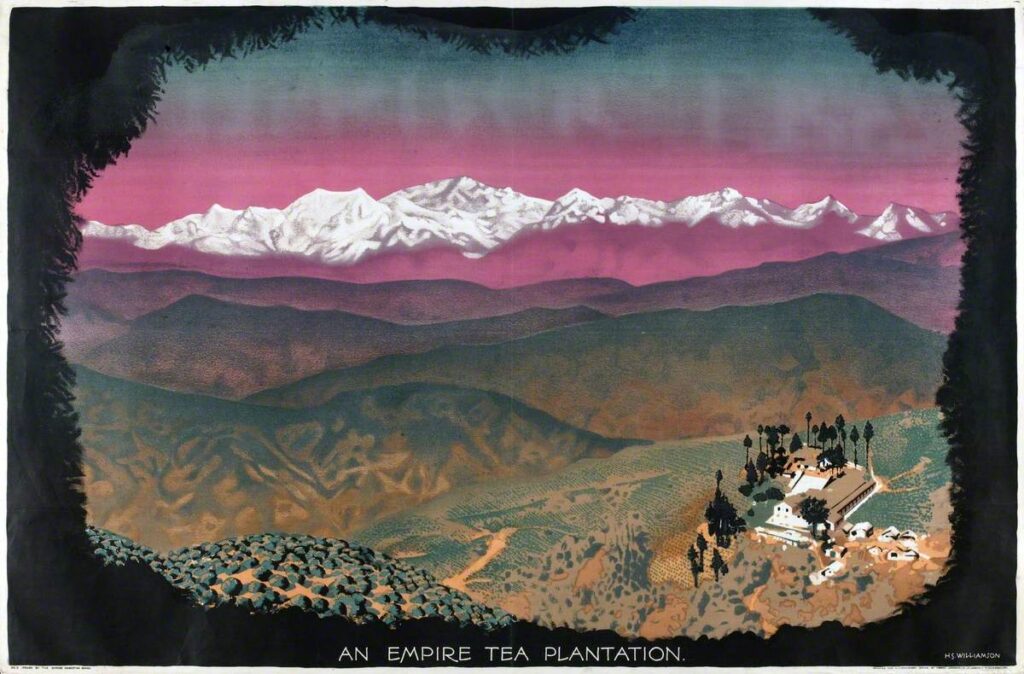
Advertisements in India also highlighted the British colonial image of tea – uniting happy labourers and mannered drinkers – as the Great Depression’s effects drove efforts to expand India’s domestic market. However, many nationalists opposed the colonial product until the trade board repositioned tea as a unifying, homegrown force during the struggle for independence.
An advertisement created in 1947, the year India gained independence, claimed tea as ‘100% Swadeshi’, incorporating the image of a Ghandian spinning wheel to situate it in the movement for self-reliance.
The @CSASPOxford @AsianStudies_Ox @OSGAOxford Modern South Asian Studies seminar next week features Prof Philip Lutgendorf @uiowa on "Chai -why?" – The making of the Indian "national drink". Tues 27 Oct 2pm. Register via Eventbrite. pic.twitter.com/egCUNDbH6K
— CSASP Oxford Uni (@CSASPOxford) October 25, 2020
This marketing and the introduction of new tea-processing technology in the 1960s allowed chai to develop its now-ubiquitous presence.
The symbolism of tea continued to change in the UK as well. A 1950 portrait of the royal family took its composition from traditional conversation pieces, but the casual, domestic poses conveyed a newly informal approach after the social upheavals of the Second World War. Commonality, it suggested, could be found in the everyday event of having tea.
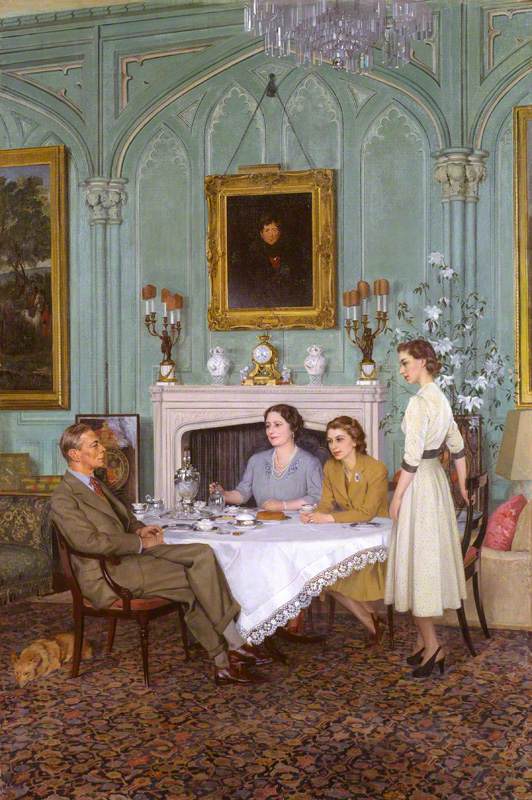
The growing postcolonial awareness of inequity has generated more depictions of the complexities of tea history, rather than the mere palatable. Susan Stockwell’s 2000 teabag collage styles the UK as a ‘Tea Country’ while mapping the legacy of colonial exploitation behind that identity.
China and India remain the largest producers of tea globally, but in 2021, Oxfam India reported that tea labourers in Assam were still paid less than a quarter of the proposed living wage.
Ai Weiwei’s 2007 work A Ton of Tea compresses this global history into a minimalist – albeit hefty – block, the weight of which we still carry today.
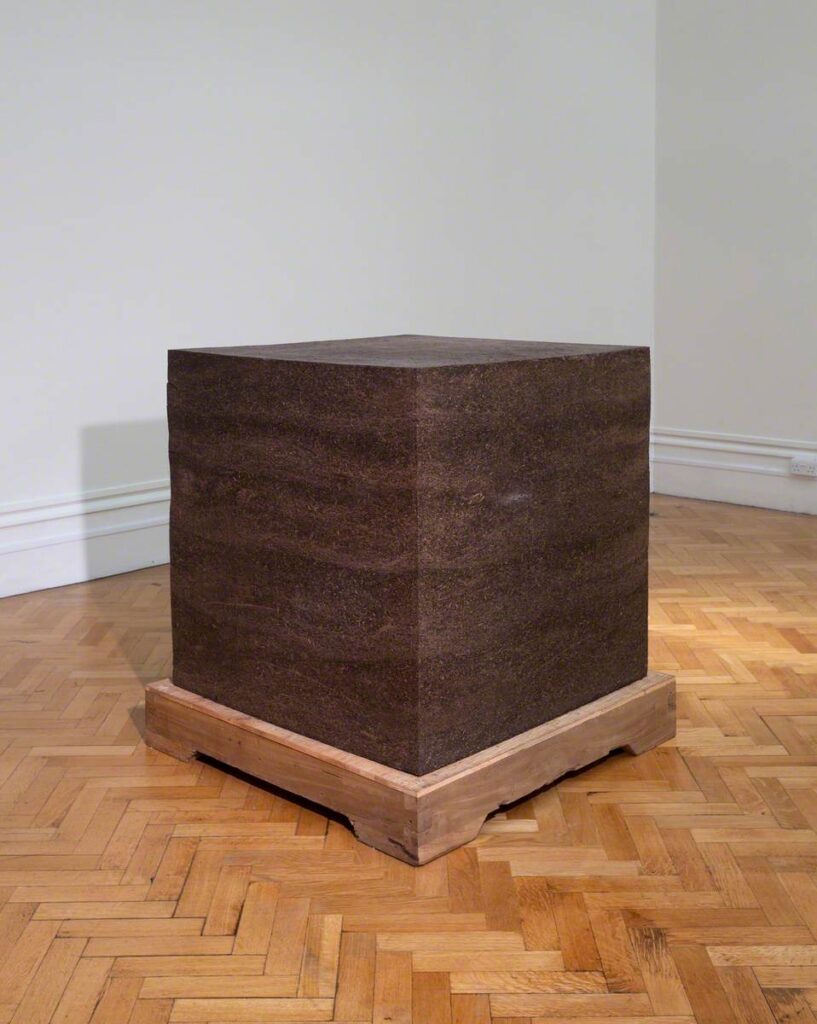
Tea remains an important cultural connector, too, in moments of ceremony in Japan, wedding traditions in India and China, and commiseration in the UK. It can even, occasionally, be found in the US. To paraphrase Kazukō: humanity continues to meet in the teacup.
Anne Wallentine, writer, editor and art historian
Original article: Art UK


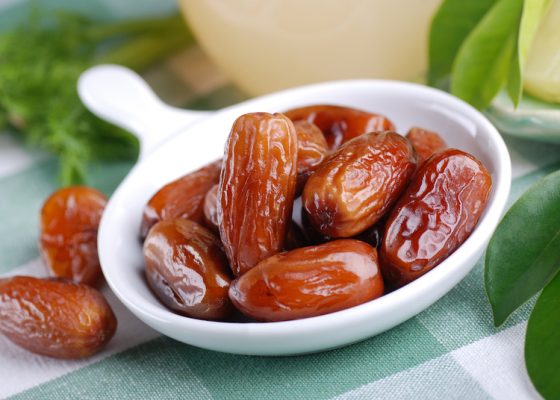
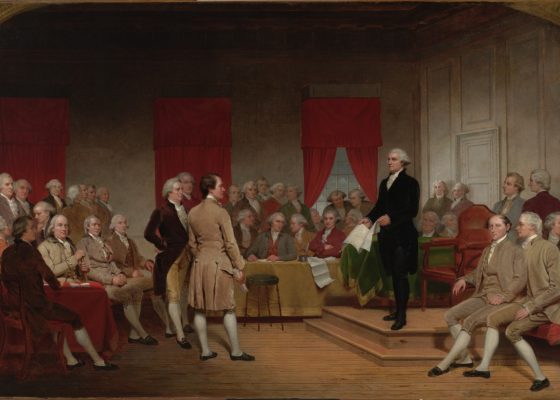


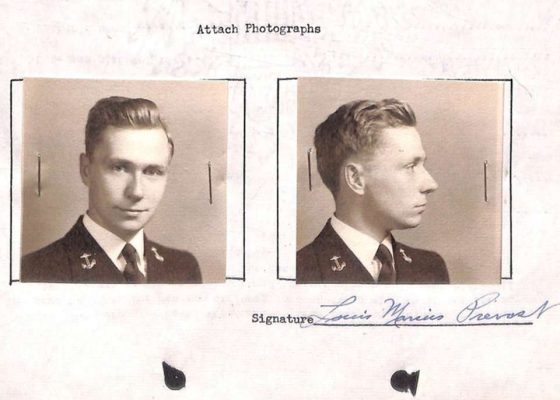


Cancel anytime


Using our website
You may use the The Middle Land website subject to the Terms and Conditions set out on this page. Visit this page regularly to check the latest Terms and Conditions. Access and use of this site constitutes your acceptance of the Terms and Conditions in-force at the time of use.
Intellectual property
Names, images and logos displayed on this site that identify The Middle Land are the intellectual property of New San Cai Inc. Copying any of this material is not permitted without prior written approval from the owner of the relevant intellectual property rights.
Requests for such approval should be directed to the competition committee.
Please provide details of your intended use of the relevant material and include your contact details including name, address, telephone number, fax number and email.
Linking policy
You do not have to ask permission to link directly to pages hosted on this website. However, we do not permit our pages to be loaded directly into frames on your website. Our pages must load into the user’s entire window.
The Middle Land is not responsible for the contents or reliability of any site to which it is hyperlinked and does not necessarily endorse the views expressed within them. Linking to or from this site should not be taken as endorsement of any kind. We cannot guarantee that these links will work all the time and have no control over the availability of the linked pages.
Submissions
All information, data, text, graphics or any other materials whatsoever uploaded or transmitted by you is your sole responsibility. This means that you are entirely responsible for all content you upload, post, email or otherwise transmit to the The Middle Land website.
Virus protection
We make every effort to check and test material at all stages of production. It is always recommended to run an anti-virus program on all material downloaded from the Internet. We cannot accept any responsibility for any loss, disruption or damage to your data or computer system, which may occur while using material derived from this website.
Disclaimer
The website is provided ‘as is’, without any representation or endorsement made, and without warranty of any kind whether express or implied.
Your use of any information or materials on this website is entirely at your own risk, for which we shall not be liable. It is your responsibility to ensure any products, services or information available through this website meet your specific requirements.
We do not warrant the operation of this site will be uninterrupted or error free, that defects will be corrected, or that this site or the server that makes it available are free of viruses or represent the full functionality, accuracy and reliability of the materials. In no event will we be liable for any loss or damage including, without limitation, loss of profits, indirect or consequential loss or damage, or any loss or damages whatsoever arising from the use, or loss of data, arising out of – or in connection with – the use of this website.
Last Updated: September 11, 2024
New San Cai Inc. (hereinafter “The Middle Land,” “we,” “us,” or “our”) owns and operates www.themiddleland.com, its affiliated websites and applications (our “Sites”), and provides related products, services, newsletters, and other offerings (together with the Sites, our “Services”) to art lovers and visitors around the world.
This Privacy Policy (the “Policy”) is intended to provide you with information on how we collect, use, and share your personal data. We process personal data from visitors of our Sites, users of our Services, readers or bloggers (collectively, “you” or “your”). Personal data is any information about you. This Policy also describes your choices regarding use, access, and correction of your personal information.
If after reading this Policy you have additional questions or would like further information, please email at middleland@protonmail.com.
PERSONAL DATA WE COLLECT AND HOW WE USE IT
We collect and process personal data only for lawful reasons, such as our legitimate business interests, your consent, or to fulfill our legal or contractual obligations.
Information You Provide to Us
Most of the information Join Talents collects is provided by you voluntarily while using our Services. We do not request highly sensitive data, such as health or medical information, racial or ethnic origin, political opinions, religious or philosophical beliefs, trade union membership, etc. and we ask that you refrain from sending us any such information.
Here are the types of personal data that you voluntarily provide to us:
As a registered users or customers, you may ask us to review or retrieve emails sent to your business. We will access these emails to provide these services for you.
We use the personal data you provide to us for the following business purposes:
Information Obtained from Third-Party Sources
We collect and publish biographical and other information about users, which we use to promote the articles and our bloggers who use our sites. If you provide personal information about others, or if others give us your information, we will only use that information for the specific reason for which it was provided.
Information We Collect by Automated Means
Log Files
The site uses your IP address to help diagnose server problems, and to administer our website. We use your IP addresses to analyze trends and gather broad demographic information for aggregate use.
Every time you access our Site, some data is temporarily stored and processed in a log file, such as your IP addresses, the browser types, the operating systems, the recalled page, or the date and time of the recall. This data is only evaluated for statistical purposes, such as to help us diagnose problems with our servers, to administer our sites, or to improve our Services.
Do Not Track
Your browser or device may include “Do Not Track” functionality. Our information collection and disclosure practices, and the choices that we provide to customers, will continue to operate as described in this Privacy Policy, whether or not a “Do Not Track” signal is received.
HOW WE SHARE YOUR INFORMATION
We may share your personal data with third parties only in the ways that are described in this Privacy Policy. We do not sell, rent, or lease your personal data to third parties, and We does not transfer your personal data to third parties for their direct marketing purposes.
We may share your personal data with third parties as follows:
There may be other instances where we share your personal data with third parties based on your consent.
HOW WE STORE AND SECURE YOUR INFORMATION
We retain your information for as long as your account is active or as needed to provide you Services. If you wish to cancel your account, please contact us middleland@protonmail.com. We will retain and use your personal data as necessary to comply with legal obligations, resolve disputes, and enforce our agreements.
All you and our data are stored in the server in the United States, we do not sales or transfer your personal data to the third party. All information you provide is stored on a secure server, and we generally accepted industry standards to protect the personal data we process both during transmission and once received.
YOUR RIGHTS/OPT OUT
You may correct, update, amend, delete/remove, or deactivate your account and personal data by making the change on your Blog on www.themiddleland.com or by emailing middleland@protonmail.com. We will respond to your request within a reasonable timeframe.
You may choose to stop receiving Join Talents newsletters or marketing emails at any time by following the unsubscribe instructions included in those communications, or you can email us at middleland@protonmail.com
LINKS TO OTHER WEBSITES
The Middle Land include links to other websites whose privacy practices may differ from that of ours. If you submit personal data to any of those sites, your information is governed by their privacy statements. We encourage you to carefully read the Privacy Policy of any website you visit.
NOTE TO PARENTS OR GUARDIANS
Our Services are not intended for use by children, and we do not knowingly or intentionally solicit data from or market to children under the age of 18. We reserve the right to delete the child’s information and the child’s registration on the Sites.
PRIVACY POLICY CHANGES
We may update this Privacy Policy to reflect changes to our personal data processing practices. If any material changes are made, we will notify you on the Sites prior to the change becoming effective. You are encouraged to periodically review this Policy.
HOW TO CONTACT US
If you have any questions about our Privacy Policy, please email middleland@protonmail.com
The Michelin brothers created the guide, which included information like maps, car mechanics listings, hotels and petrol stations across France to spur demand.
The guide began to award stars to fine dining restaurants in 1926.
At first, they offered just one star, the concept was expanded in 1931 to include one, two and three stars. One star establishments represent a “very good restaurant in its category”. Two honour “excellent cooking, worth a detour” and three reward “exceptional cuisine, worth a
Thank you for your participation,
please Log in or Sign up to Vote

123Sign in to your account